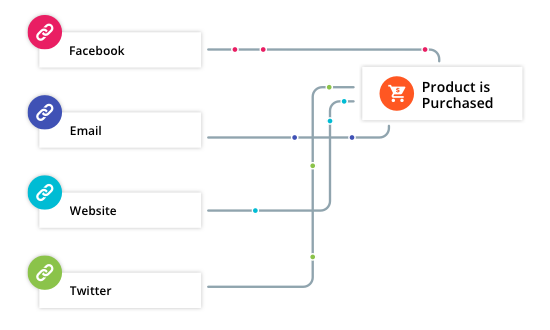Taking the time to explore what really works for your audience and potential customers is crucial. If you aren’t using any strategies toward this end, much of what you do is guesswork — and that is not a long term marketing solution. Even if you have had some success with your campaigns in the past, you may be experiencing a slump in performance and need to revamp your marketing strategy. Without knowing which of your ads and assets are bringing in the most traffic and conversions, there’s no way to effectively decipher what’s working best.
Marketers today have many tools available to help refine their efforts. If you’ve looked into some of these solutions, you have probably heard about the use of marketing analytics and its ability to help marketers capture information about campaign performance. Marketing analytics can help you figure out which campaigns and marketing assets are performing and which are underperforming so that you can make effective decisions and adjustments with confidence.

Start in the shallow end
Interestingly, for all of the emphasis experts place on website analytics in the marketing world, fewer than 30% of small businesses have actually implemented this tool into their strategies, according to Blue Corona. The reason for this is often that business owners and marketers feel overwhelmed by either the amount of data or how to best interpret it.
Going after every aspect of marketing analytics at once can be overwhelming and confusing. So, to get started, focus your energy on understanding where your web traffic is coming from and which of your marketing efforts are performing best. Once you know which of your lead sources are performing well, you can use that feedback to iterate from there. For example, you can put more of your advertising budget toward the ads that are successful, or send the email in your funnel that gets the most click-throughs and stop sending other emails.
To accomplish this, you simply need to implement UTM variables, which allow you to assess where your web traffic is coming from. UTM variables are alterations to the URL of the page you’re sending traffic to, which enable you to identify them specifically.

Steer clear of low-converting channels
In a typical marketing campaign, your business is going to utilize multiple channels in attempts to generate as much traffic as possible to your desired website or landing page. If you are sending all your traffic to the same website, how are you going to know which source they are coming from and which ones are performing the best?
According to the UTM Link Planning Worksheet, “It’s important to use a link with UTM tracking so that you can measure the results of your time and money spent promoting your business via different channels.” As a result, you won’t have to wonder what’s working in your marketing strategy and what’s not. With UTM links in place, you’ll have all the data at your fingertips to confidently make decisions about your marketing plans and budget.
Adding a UTM link is just the beginning of your lead-converting adventure
Tracking your marketing campaigns by implementing UTM variables will allow you to:
- Know exactly where your leads and web traffic are coming from so that you can have a more complete picture of your customer journey
- See which channels are generating the most leads so that you can put more effort and budget into the sources that are sending you the most prospects
- Understand which of your digital advertisements are converting the best in order to optimize your ad sets to only include your best performers
- Know which content piece or blog article is driving the most traffic to your website so that you can promote your most popular content
- Integrate with a marketing analytics platform that will automatically store and sort the information you gather from your UTM variables for future use
- Know when it’s the right time to “turn off” underperforming lead sources so you can get the most out of your marketing budget and boost your ROI
For in-depth information on what UTM variables are and exactly how to generate and implement them into your business, check out the UTM Link Planning Worksheet.
